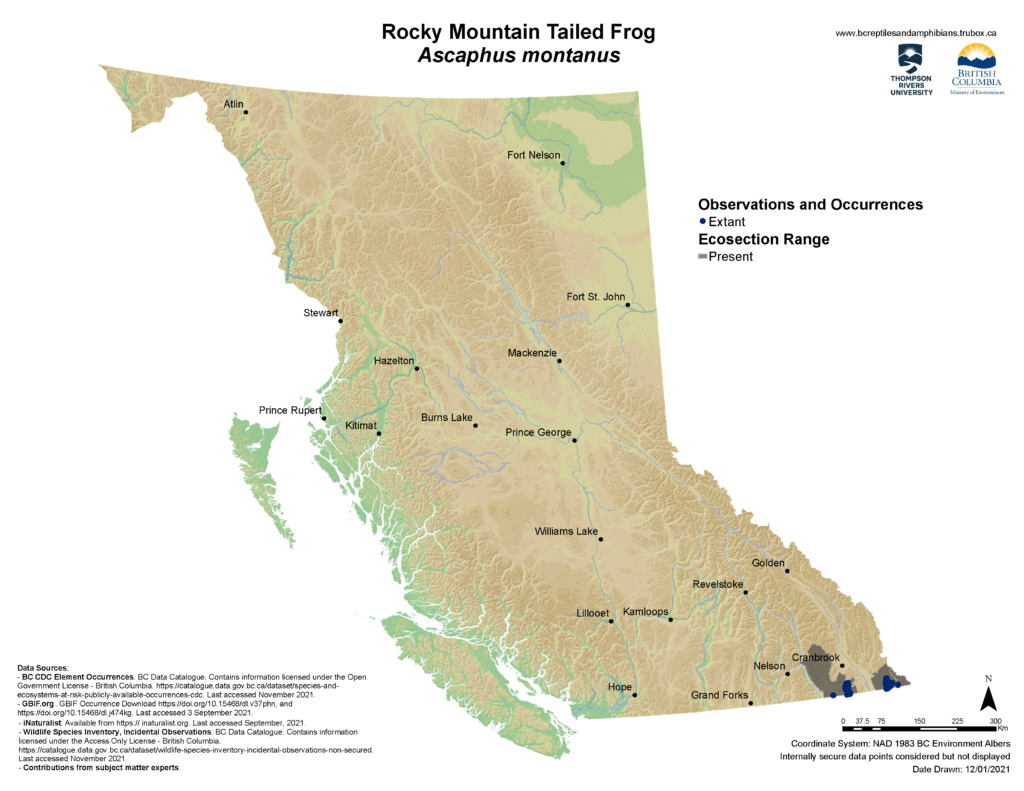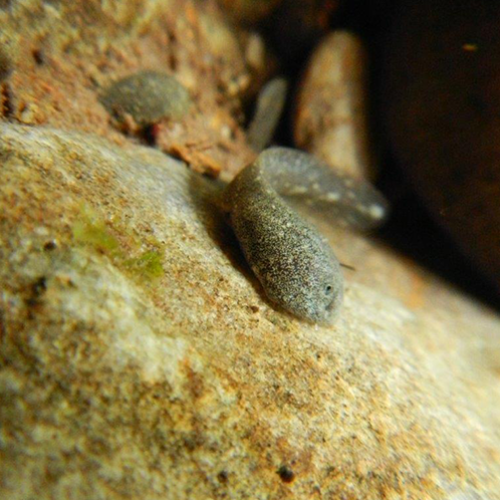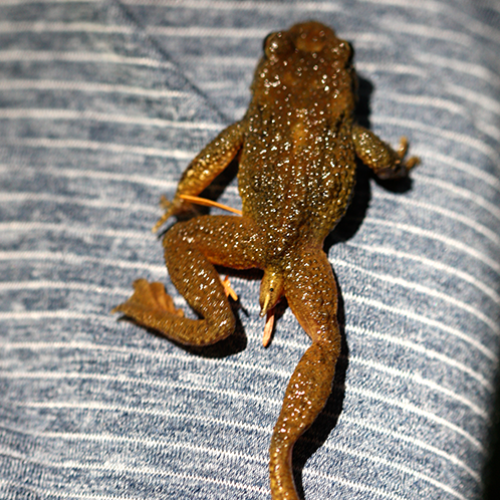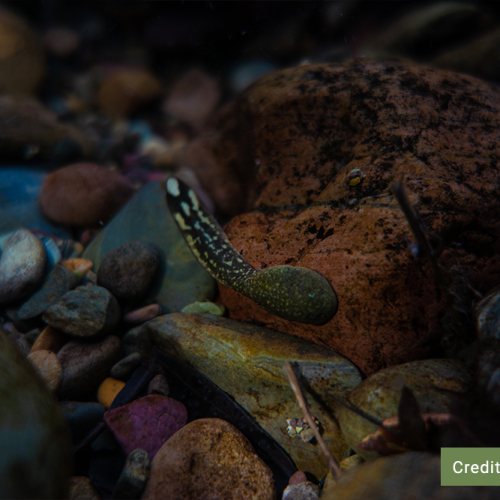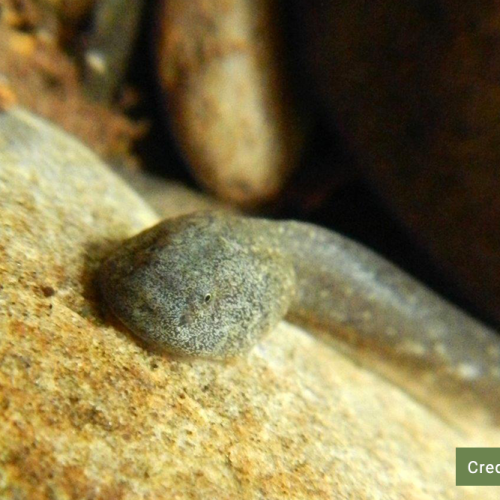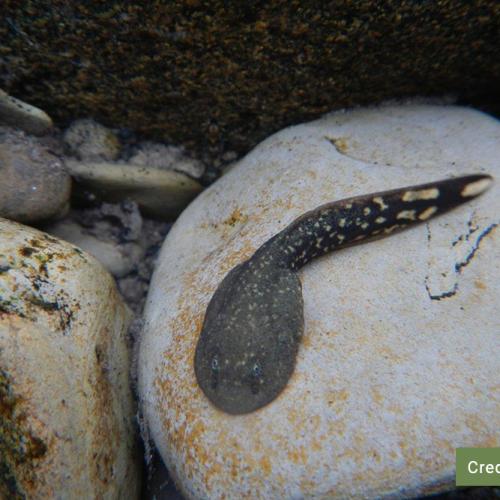Credit: Glacier NPS
Rocky Mountain Tailed Frog
Ascaphus montanus
Description
Other names: Tailed Toad, Bell Toad
Listen to the Indigenous words for “frog” here!
Rocky Mountain Tailed Frog Call
This species lacks a tympanumDefinition:The ear opening in many amphibians, reptiles, and insect. In amphibians, it is normally covered by a circular membrane. and thus, does not have a breeding call. This may be an adaptation to living with the constant noise of mountain streams.
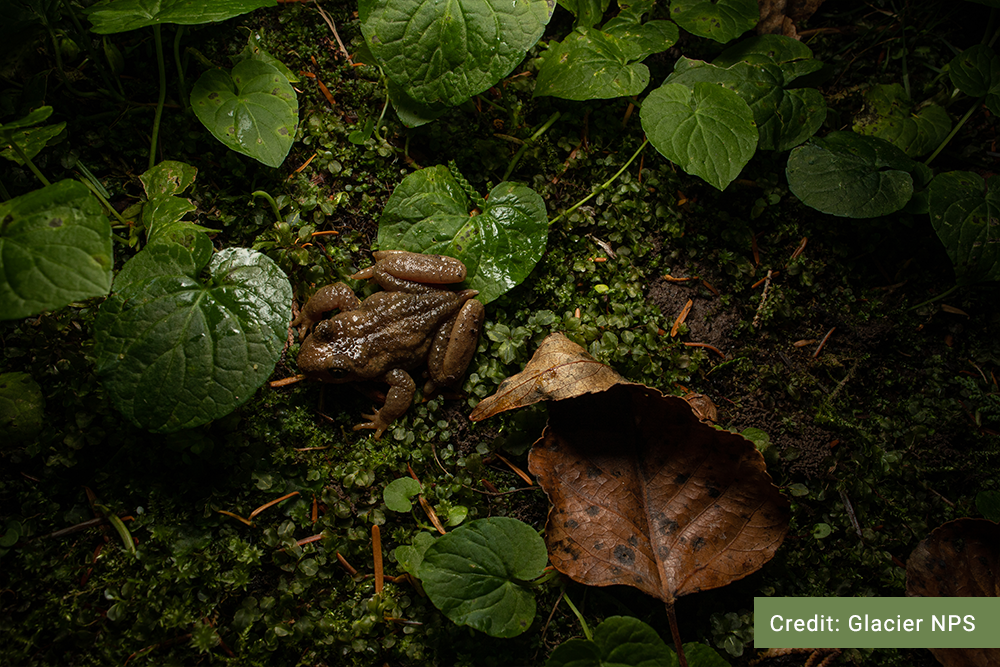
Rocky Mountain Tailed Frog Call
This species lacks a tympanumDefinition:The ear opening in many amphibians, reptiles, and insect. In amphibians, it is normally covered by a circular membrane. and thus, does not have a breeding call. This may be an adaptation to living with the constant noise of mountain streams.
Similar Species
The Rocky Mountain Tailed Frog is very similar to the Coastal Tailed Frog, and the two were considered a single species until recently. The distributions of the two species do not overlap. The Rocky Mountain Tailed Frog has black speckling on the body, and tadpoles have distinct light mottling; both of these features are absent in Coastal Tailed Frogs. The Rocky Mountain Tailed Frog can be recognized from all other Canadian frogs by the absence of the tympanum and the presence of the ‘tail’ in males.

Rocky Mountain Tailed Frog
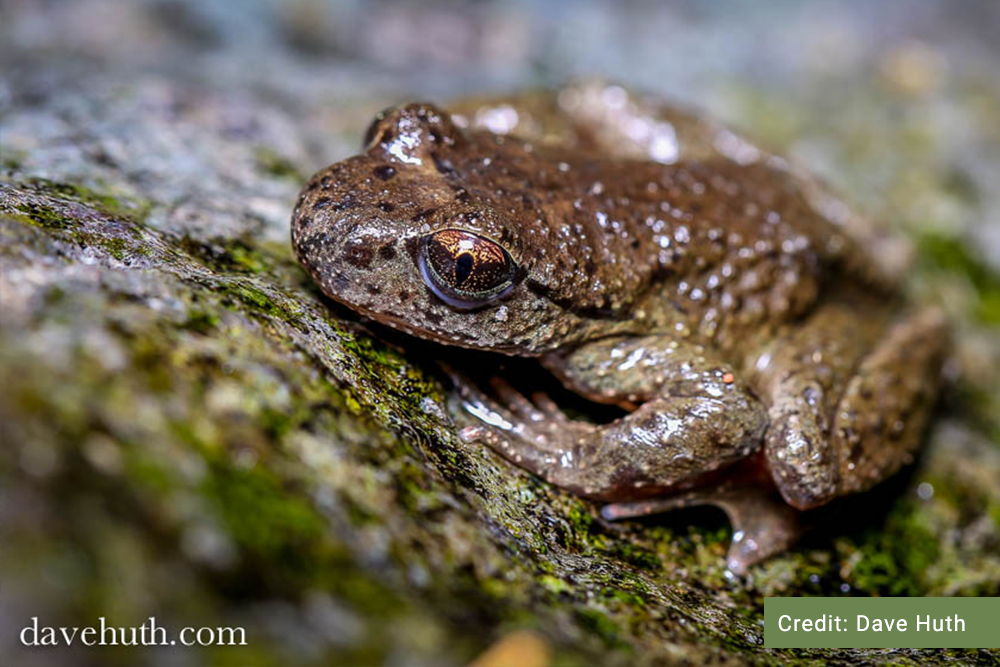
Coastal Tailed Frog
Distribution
In British Columbia, there are two isolated populations limited to the extreme southeast corner of the province, separated from each other by the Rocky Mountain Trench. These populations are continuous with populations in the United States through northern Idaho and northwestern Montana.
Habitat
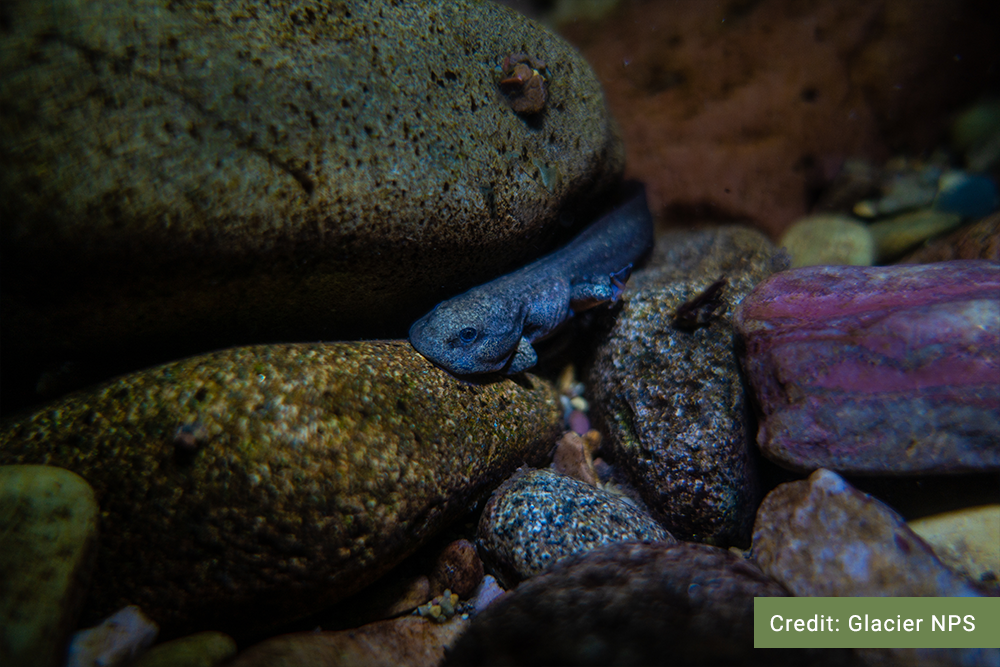
Reproduction
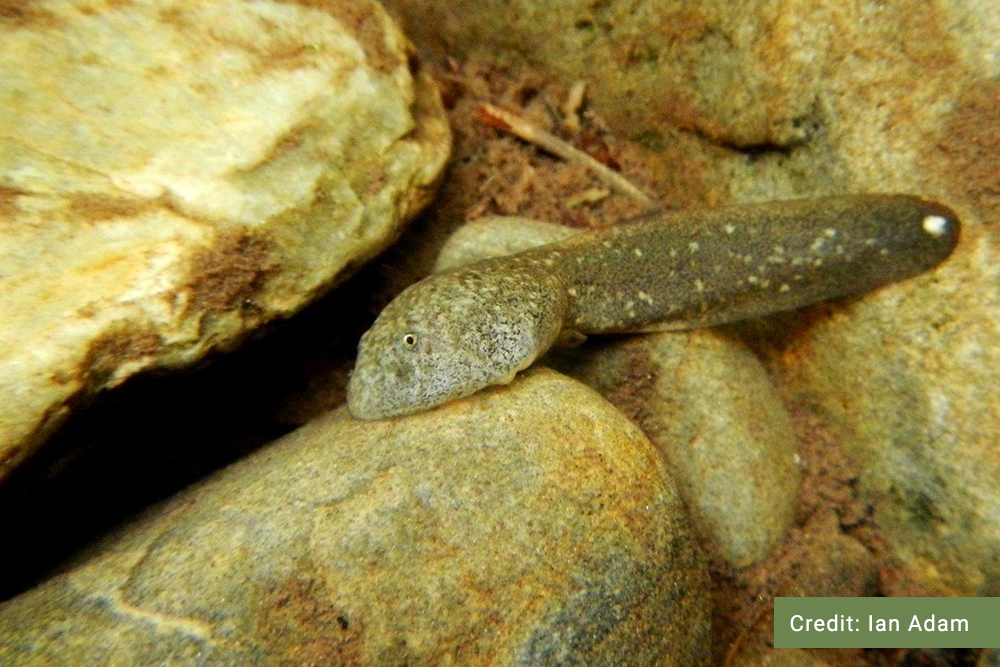
Diet

Conservation Status
Global: G4 (2016)
COSEWIC: T
SARA:1-T (2018)
Provincial: S2S3 (2016)
BC List: Blue
Learn more about conservation status rankings here
Threats

Did You Know?
Fact #1
Fact #2
Fact #3
Species Account Author: Marcus Atkins
B.C. Conservation Data Centre. 2021. BC Species and Ecosystems Explorer. B.C. Minist. of Environ. Victoria, B.C.
Available: https://a100.gov.bc.ca/pub/eswp/ (accessed May 19, 2021).
COSEWIC. 2013. COSEWIC assessment and status report on the Rocky Mountain Tailed Frog Ascaphus montanus in Canada. Committee on the Status of Endangered Wildlife in Canada. Ottawa. xii + 46 pp.
B.C. Ministry of Environment. 2014r. Recovery plan for the Rocky Mountain Tailed Frog (Ascaphus montanus) in British Columbia. Prepared for the B.C. Ministry of Environment, Victoria, BC. 37 pp.
B.C. Conservation Data Centre. 2004. Species Summary: Ascaphus montanus. B.C. Minist. of Environment.
Available: https://a100.gov.bc.ca/pub/eswp/ (accessed May 19, 2021).
Matsuda, Brent M., David M. Green and Patrick M. Gregory. Amphibians and reptiles of British Columbia. Royal British Columbia Museum, Victoria.
http://www.canadianherpetology.ca/species/species_page.html?cname=Coastal%20Tailed%20Frog
https://www.naturewatch.ca/frogwatch/tailed-frog/
http://a100.gov.bc.ca/pub/eirs/viewDocumentDetail.do?fromStatic=true&repository=BDP&documentId=3664
https://linnet.geog.ubc.ca/efauna/Atlas/Atlas.aspx?sciname=Ascaphus%20montanus&ilifeform=1

